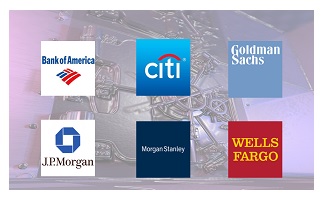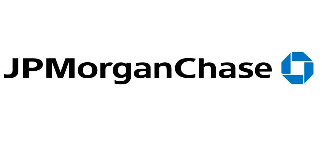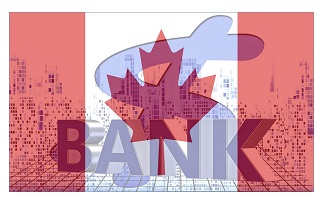Written by: Jay Yi, MBA; Edited by: Chris Thompson, CFA, MBA, P.Eng
eResearch | Quarterly results from the four largest U.S. banks (JPMorgan Chase, Bank of America, Citigroup, and Wells Fargo) showed better than expected results as American consumers continued to support the economy.
Geopolitical and trade risks are fueling recession fears and weakening business sentiment, leading to lower capital expenditures, but with solid home equity and low unemployment, the banks earning showed that consumer spending helped prop up the economy as banks relied on home, auto and card lending to beat estimates.
As the U.S. government fears a recession, pressure continues on the Federal Reserve to maintain a low interest rate environment. As banks rely on the overnight lending rate for stable revenue from its primary lending business, they are now forced to focus on their other revenue streams, such as investment banking, to make up for the lower revenue from interest payments.
Two months ago, the U.S. Federal Reserve cut interest rates for the first time in 11 years, which was followed by an announcement last month that it would be again lower the benchmark overnight lending rate to a target range of 1.75% to 2%.
This month, the 10-year bond yields rose to 1.76%, while the 3-month short-term yield fell to 1.67%. The normalizing yield curve and the recent U.S. and China trade war truce may provide a positive outlook for banks moving forward.
Below are recent Q3/2019 earnings highlights for three major U.S. banks.
 J.P. Morgan Chase Q3/2019 Earnings Highlights
J.P. Morgan Chase Q3/2019 Earnings Highlights
- J.P. Morgan Chase & Co. (NYSE: JPM; LSE: JETI) beat consensus analyst estimates for revenue, which grew to US$28.5 billion, an 8.1% increase year-over-year, and profits, which grew to US$9.1 billion, an 8% increase year-over-year.
- Growth was stimulated by increased consumer spending as JPMC experienced a 3% increase in home loans and a 9% increase in auto-services, credit cards, and merchant-services year-over-year.
- Non-interest revenue grew to US$15.1 billion, a 13.2% increase year-over-year, mainly attributed to a 238% increase in mortgage fees and a 16.4% increase in principal transactions.
- JPMC recorded expenses of US$16.5 billion, a 5.1% increase year-over-year attributed to a 12.4% increase in tech investments and an 18.4% increase in marketing expenses, but the efficiency ratio dropped to 55% compared with 56.2% year-over-year.
- Return on Tangible Common Equity was 17%, unchanged year-over-year.
 Bank of America Q3/2019 Earnings Highlights
Bank of America Q3/2019 Earnings Highlights
- Bank of America Corp. (NYSE: BAC; LSE: 0Q16) beat consensus analyst estimates for revenue at US$23 billion, which remained unchanged year-over-year due to large one-time gains last year. Net income was at US$5.8 billion, a 19% decrease year-over-year, attributed to an impairment charge of US$2.1 billion, which if adjusted for, would have pushed net income to US$7.5 billion, a 4% increase year-over-year.
- Increase in revenue and profits were due to a 7% increase in consumer loans, and a 58% and 18% increase in mortgage and auto loan originations, respectively.
- The Global Banking Business segment grew revenue to US$5.2 billion, an 8% increase year-over-year, mainly attributed to a 27% increase in investment banking fees.
- Bank of America recorded non-interest expenses of US$15.2 billion, which includes a one-time US$2.1 billion impairment charge, but otherwise had little change year-over-year. Efficiency ratio has maintained 57% for the past three quarters.
- Bank of America returned US$9.3 billion in capital back to shareholders through share buybacks and dividends.
- Return on Tangible Common Equity was 11.8% compared with 15% year-over-year.
 U.S. Bancorp Q3/2019 Earnings Highlights
U.S. Bancorp Q3/2019 Earnings Highlights
- U.S. Bancorp (NYSE: USB; lSE: 0LHY) beat consensus analyst estimates for revenue which grew to US$5.9 billion, a 4% increase year-over-year, and net revenue which grew to US$1.9 billion, a 5.1% increase year-over-year.
- Revenue and profit growth was mainly due to an 8.8% increase in credit card loans and a 10.6% increase in residential mortgage loans.
- Non-interest revenue grew to US$2.6 billion, an 8.1% increase year-over-year, mainly attributed to a 56% increase in mortgage services and a 19% increase in investment and other income.
- U.S. Bancorp recorded expenses of US$3.1 billion, a 3.1% increase year-over-year attributed to increases in compensation, employee benefits, and technology capital expenditures. Efficiency ratio stayed unchanged at 53%.
- Return on Tangible Common Equity was 19.4%, compared with 19.9% year-over-year.
A common trend seen amongst the U.S. banks was growth in operations through mortgage services and investment banking. U.S. banks are also all investing in technology to increase operational efficiency and internal processes.
The back-to-back interest rate cuts in Q3/2019 goal was to stimulate the economy and shifted investors into equities and they sought higher yields, which pushed the S&P500 up almost 20% this year. As banks are reporting strong loan and revenue growth, it will be interesting to see how they manage returns if interest rates are cut again.
//
J.P. Morgan Chase & Co. (NYSE: JPM; LSE: JETI)
- jpmorgan.com
- Headquartered in New York City, United States,P. Morgan Chase is a multinational investment bank, and ranked as the sixth largest bank by S&P Global.
- JPMC currently trades at US$120.56 per share with a market capitalization of US$385.4 billion.
Bank of America Corp. (NYSE: BAC; LSE: 0Q16)
- bankofamerica.com
- Headquartered in North Carolina, U.S., Bank of America is the second largest bank in the U.S. and the eighth largest bank in the world based on assets. The bank offers investment banking and financial services globally.
- Bank of America is currently trading at US$33.35 per share with a market capitalization of US$275 billion.
U.S. Bancorp (NYSE: USB; lSE: 0LHY)
- usbank.com
- Headquartered in Minnesota, U.S., U.S. Bancorp is parent company of the U.S. Bank National Association, which is the fifth largest bank in the U.S. The bank offers consumer and global banking solutions through loans, investments, and transactional services.
- U.S. Bancorp is currently trading at US$55.07 per share with a market capitalization of US$86.7 billion.
//



